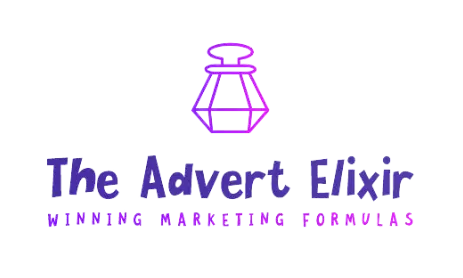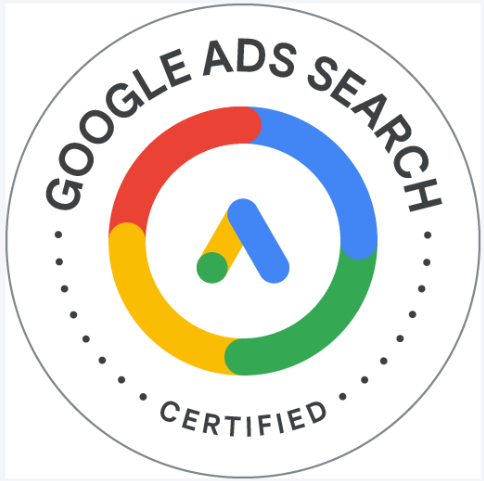In the ever-evolving realm of recruitment, sourcing and engaging top-tier talent presents an ongoing challenge. While traditional methods hold their ground, the significance of targeted ads cannot be overstressed. This expansive blog post will uncover the secrets to creating highly effective targeted ads tailored for UK recruitment agencies. We’ll explore strategies that transcend the basics, unlocking the full potential of your talent acquisition endeavours.
Section 1: Grasping the Landscape
1.1 The Significance of Targeted Ads in UK Recruitment
The recruitment landscape has transformed, demanding innovative approaches to connect with potential candidates. Targeted ads provide a precision-focused strategy, enabling recruitment agencies to engage individuals who align seamlessly with specific roles.
1.2 The Drawbacks of Generic Advertising in UK Recruitment
Generic advertising for recruitment agencies comes with several drawbacks that can hinder the effectiveness of your campaigns. Understanding these limitations is crucial for developing a more targeted and impactful recruitment strategy. Here are some key drawbacks:
- Low Visibility and Engagement:
- Generic job postings often get lost in the sea of similar listings on job boards and social media. Candidates may overlook these postings, leading to lower visibility and reduced engagement.
- Limited Differentiation:
- Generic ads make it challenging for recruitment agencies to stand out from the competition. When job descriptions and company profiles lack distinctiveness, potential candidates may struggle to differentiate between opportunities, making it harder to attract top talent.
- Impersonal Approach:
- Generic ads tend to follow a one-size-fits-all approach. They lack the personal touch needed to resonate with candidates. Job seekers are more likely to respond to personalised messages that speak to their specific skills, experiences, and career aspirations.
- Reduced Quality of Applicants:
- Without a targeted approach, recruitment agencies may attract a larger volume of applicants, but the quality of those applicants may be lower. Many might not possess the specific skills or qualifications required for the role, leading to a time-consuming and resource-intensive candidate screening process.
- Negative Impact on Employer Brand:
- Consistently using generic ads can negatively impact the perception of your employer brand. Potential candidates may view your agency as generic or lacking in a distinct identity, affecting their willingness to engage with your opportunities.
- Ineffective Use of Resources:
- Generic advertising can result in a high volume of applications that do not match the job requirements. This influx of irrelevant applications requires additional time and resources for sorting through resumes and conducting initial screenings.
- Missed Opportunities for Diversity and Inclusion:
- Generic ads may inadvertently discourage candidates from diverse backgrounds from applying. If the language and content of the ad do not reflect an inclusive workplace culture, recruitment agencies may miss out on diverse talents that could contribute to a more dynamic team.
- Lack of Targeted Messaging:
- Generic ads lack the specificity needed to address the unique needs and preferences of different candidate segments. Tailoring messages to specific audiences is crucial for attracting individuals with the right skills and cultural fit.
- Difficulty in Measuring Effectiveness:
- Generic ads may lead to challenges in measuring the success of your recruitment efforts. Without targeted messaging and specific goals, it becomes harder to assess which channels and strategies are delivering the best results.
Section 2: Establishing a Solid Foundation
2.1 Define Your Audience Personas
Creating detailed candidate personas is a crucial step for recruitment agencies to tailor their ad strategy effectively. Here’s the recommended steps to take you through the process:
Step 1: Collect Data on Your Current Talent Pool
Begin by analysing your existing database of candidates. Identify common characteristics, skills, and experiences among successful placements. Look for patterns in the roles they’ve applied for and the industries they come from.
Step 2: Conduct Surveys and Interviews
Reach out to your current pool of candidates for feedback. Use surveys and interviews to understand their motivations, challenges, and preferences. Ask about their career goals, preferred communication channels, and the factors that influenced their decision to work with your agency.
Step 3: Analyse Job Descriptions and Requirements
Examine past and present job descriptions. Identify the key skills, qualifications, and characteristics sought by your clients. Understanding what attracts candidates to specific roles will help in creating personas that align with your recruitment goals.
Step 4: Identify Pain Points and Challenges
Explore the pain points and challenges that candidates face in their job search. Understanding the hurdles they encounter can inform your messaging and positioning, making your agency more empathetic and appealing.
Step 5: Categorise Based on Skills and Experience
Group candidates into categories based on their skills, experience levels, and industry backgrounds. This segmentation will help you create targeted ads for specific candidate segments, ensuring that your messaging resonates with their unique needs.
Step 6: Define Personal and Professional Goals
Understand the personal and professional aspirations of your candidates. What are their long-term career goals? How do they define success? Knowing these aspects helps in tailoring your messaging to align with their ambitions.
Step 7: Consider Demographic Factors
Factor in demographic information such as age, location, and educational background. These details can influence communication preferences and the type of job opportunities that resonate with different candidate groups.
Step 8: Develop Detailed Personas
Combine the insights gathered from the previous steps to create detailed candidate personas. Each persona should represent a specific segment of your target audience. Include details such as:
- Name and Background: Give each persona a name and outline their professional background.
- Skills and Qualifications: List the key skills and qualifications relevant to their roles.
- Motivations: Describe what motivates them in their career and job search.
- Challenges: Identify the challenges they face in finding the right opportunities.
- Preferred Communication Channels: Specify where and how they prefer to receive information about job opportunities.
Step 9: Use Personas to Inform Ad Strategy
With detailed candidate personas in hand, tailor your ad strategy to speak directly to each segment. Craft messaging that addresses their unique needs, aspirations, and pain points. Choose the most effective channels based on their preferred communication methods.
Step 10: Continuously Refine Personas
Regularly revisit and update your personas as the recruitment landscape evolves. New trends, industry changes, and shifts in candidate expectations may require adjustments to ensure your ad strategy remains effective.
By following these steps, recruitment agencies can create detailed and actionable candidate personas that serve as the foundation for a targeted and impactful ad strategy.
2.2 Leverage Data Analytics
Explore the power of data analytics in refining your targeting. We’ll discuss tools and techniques to gather insights into candidate behaviours, preferences, and trends.
Section 3: Crafting Compelling Ad Content
3.1 The Art of Storytelling in Recruitment Ads
Move beyond traditional job descriptions. Learn how to tell a compelling story that resonates with your audience, showcasing your company culture and the unique opportunities you offer.
3.2 Highlighting Company Values
Candidates are increasingly looking for employers who align with their values. Weave your company values into your ad content for maximum impact.
3.3 Engaging Visuals and Multimedia
Incorporate engaging visuals and multimedia elements in your ads. From eye-catching graphics to video snippets, learn how to capture attention and keep candidates interested.
Section 4: Platforms and Placement Strategies
4.1 LinkedIn: The Power of Professional Networking
Leveraging LinkedIn for recruitment advertising offers a unique opportunity to connect with professionals in a business-focused environment. Here’s an outline of the best strategies for making the most of LinkedIn advertising:
Sponsored Content:
LinkedIn’s sponsored content allows you to promote your recruitment ads directly into the newsfeeds of your target audience. Here’s how to maximise this feature:
- Targeting: Utilise LinkedIn’s robust targeting options to ensure your content reaches the right professionals. You can target based on job title, industry, company size, and more.
- Compelling Visuals and Copy: Create visually appealing content with engaging headlines. Clearly communicate the value proposition of the job opportunity or the benefits of working with your agency.
- Call to Action (CTA): Include a strong call to action, guiding users on the next steps, whether it’s applying for a position, visiting your website, or reaching out for more information.
InMail Campaigns:
LinkedIn’s InMail feature allows you to send direct messages to professionals, even if you’re not connected. Here’s how to effectively use InMail campaigns:
- Personalisation: Craft personalised messages that speak directly to the recipient’s skills and experiences. Reference their profile and explain why your opportunity aligns with their career goals.
- Segmentation: Divide your audience into segments based on criteria such as job function, industry, or location. Tailor your InMail campaigns to address the specific needs and preferences of each segment.
- Testing and Optimisation: A/B test different elements of your InMail campaigns, such as subject lines, messaging, and calls to action. Use the insights gained to refine and optimise your future campaigns.
Company Page Optimisation:
Your LinkedIn company page serves as a hub for showcasing your agency and job opportunities. Ensure it’s optimized for maximum impact:
- Complete Profile: Fill out all sections of your company profile, providing comprehensive information about your agency, including your mission, values, and culture.
- Engaging Content: Regularly share engaging content on your company page. This can include updates on job openings, employee spotlights, industry insights, and relevant news.
- Follower Engagement: Encourage professionals to follow your company page. Engage with your followers by responding to comments, sharing valuable content, and fostering a sense of community.
LinkedIn Job Postings:
LinkedIn offers a dedicated platform for posting jobs. Make the most of this feature:
- Detailed Job Descriptions: Craft detailed and compelling job descriptions. Clearly outline the responsibilities, qualifications, and benefits associated with the position.
- Targeted Promotion: Consider using paid promotions to boost the visibility of your job postings. This ensures they reach a larger and more targeted audience.
- Mobile Optimisation: Given the prevalence of mobile usage, ensure that your job postings are mobile-friendly. Candidates often browse and apply for jobs using their mobile devices.
Utilising LinkedIn Analytics:
Regularly monitor the performance of your LinkedIn campaigns using LinkedIn Analytics:
- Metrics to Track: Keep an eye on metrics such as click-through rates, engagement, and conversion rates. Analyse the data to understand what’s working well and where there’s room for improvement.
- Adjusting Strategies: Use the insights gained from analytics to refine your strategies. If certain types of content or messaging resonate better, incorporate those learnings into future campaigns.
Building and Nurturing Talent Pools:
LinkedIn is not only a platform for immediate job openings but also an excellent tool for building talent pools:
- Engagement with Passive Candidates: Regularly engage with passive candidates by sharing relevant content, participating in industry discussions, and subtly showcasing the opportunities your agency offers.
- Customised Content for Talent Pools: Tailor your content to the interests and preferences of your talent pools. This can include newsletters, webinars, or exclusive insights into the job market.
LinkedIn provides recruitment agencies with a powerful toolkit for reaching and engaging professionals. By strategically incorporating sponsored content, InMail campaigns, optimised company pages, job postings, analytics, and talent pool building, you can maximise the impact of your LinkedIn advertising efforts and connect with top talent in your industry.
4.2 Facebook and Instagram: Tapping into Diverse Audiences
Facebook and Instagram offer recruitment agencies a versatile platform for reaching a diverse audience through visually appealing campaigns. Here’s an elaboration on how to make the most of these platforms:
- Understanding the Versatility:
Both Facebook and Instagram provide a dynamic space for creative and engaging content. As social platforms, they allow for a more informal and visually driven approach compared to professional networks like LinkedIn. This versatility is key for reaching a broad range of candidates, from entry-level positions to executive roles.
- Visual Appeal in Recruitment Ads:
- Eye-Catching Imagery and Videos: Leverage the visual nature of these platforms by incorporating eye-catching images and videos in your recruitment ads. Showcase your company culture, work environment, and the essence of the job roles.
- Employer Branding: Use Facebook and Instagram to highlight your agency’s unique selling points. Whether it’s a vibrant office culture, employee testimonials, or day-in-the-life snippets, visually communicating your employer brand is crucial for attracting the right talent.
- Consistent Branding Elements: Ensure consistency in branding elements across your ads. This includes using the same colour schemes, fonts, and logo placements. Consistent branding helps in creating a cohesive and recognisable image.
- Demographic Targeting:
One of the strengths of Facebook and Instagram advertising is their robust demographic targeting capabilities. Here’s how to leverage this feature:
- Define Target Audiences: Clearly define your target audience for each job opening. Consider factors such as age, location, education, interests, and job preferences. The more specific you can be, the more effectively you can target your ads.
- Custom Audiences: Use custom audiences to reach candidates who have interacted with your agency before, either through your website, previous job ads, or other engagements. This can be a valuable strategy for nurturing relationships with potential candidates.
- Lookalike Audiences: Create lookalike audiences to expand your reach. This feature allows you to target individuals who share similar characteristics with your existing audience, increasing the chances of finding suitable candidates.
- Engagement Strategies:
- Interactive Content: Experiment with interactive content formats, such as polls, quizzes, or Q&A sessions. These engagement-driven approaches not only attract attention but also encourage candidates to interact with your agency.
- User-Generated Content: Encourage your employees or past successful candidates to share their experiences on your Facebook and Instagram pages. User-generated content adds authenticity and can influence potential candidates positively.
- Respond to Comments and Messages: Actively engage with users who comment on your ads or send messages. Quick and personalised responses demonstrate your agency’s commitment to communication and create a positive impression.
- Ad Formats and Placement:
- Carousel Ads: Utilise carousel ads to showcase multiple job opportunities within a single ad. This format allows candidates to swipe through different roles, increasing the chances of finding a match.
- Story Ads: Leverage the ‘Stories’ feature on Instagram and Facebook for short-term, engaging content. This format is particularly effective for time-sensitive announcements, event promotions, or highlighting urgent job openings.
- Ad Placements: Consider where your audience is most active. While both Facebook and Instagram are part of the same advertising ecosystem, the user behaviour and demographics can vary. Tailor your ad placements based on the preferences of your target candidates.
- Measuring Success:
- Use Analytics Tools: Both Facebook and Instagram provide robust analytics tools to measure the performance of your ads. Monitor metrics such as engagement, click-through rates, and conversion rates to assess the effectiveness of your campaigns.
- A/B Testing: Experiment with different ad creatives, headlines, and calls to action. Conduct A/B testing to understand which elements resonate best with your audience. Use these insights to refine your future campaigns.
By exploring the versatility of Facebook and Instagram, recruitment agencies can create visually appealing campaigns that resonate with a diverse candidate pool. From leveraging demographic targeting and interactive content to measuring success through analytics, these platforms offer a range of tools for connecting with potential candidates in a more informal and engaging way.
4.3 Google Ads: Navigating the Search Landscape
Getting the best results from Google Ads is best done by an experienced practitioner (The Advert Elixir can help with this) but here a few of the main points to guide you:
- Keyword Targeting:
- Research Keywords: Identify relevant keywords job seekers use.
- Long-Tail Keywords: Use specific phrases for higher intent.
- Negative Keywords: Exclude terms for precision.
- Ad Formats:
- Text Ads: Craft compelling text ads with clear CTAs.
- Responsive Search Ads: Use dynamic variations for optimisation.
- Extensions: Enhance ads with additional information.
- Ad Placement and Targeting:
- Geographic and Device Targeting: Specify locations and device preferences.
- Dayparting: Schedule ads for optimal times.
- Quality Score and Landing Pages:
- Optimise Landing Pages: Ensure relevance and user-friendliness.
- Quality Score: Aim for a high-quality score for visibility.
- Conversion Tracking:
- Set Up Tracking: Monitor key actions like job applications.
- Optimise Based on Data: Adjust campaigns based on performance.
- Budget Management:
- Set Realistic Budget: Align with recruitment goals.
- Monitor and Adjust: Adjust budgets based on effectiveness.
- Regular Monitoring and Optimisation:
- Analytical Tools: Use Google Ads analytics for insights.
- A/B Testing: Experiment with different ad variations.
- Explore Display and Video Ads:
- Display Ads: Extend reach on Google’s display network.
- Video Ads: Showcase culture and job opportunities.
- Stay Informed:
- Stay Updated: Keep abreast of Google Ads updates and best practices.
By implementing these strategies, your recruitment agency can effectively reach and engage with a relevant audience actively searching for job opportunities through Google Ads.
Section 5: Optimising and Measuring Success
5.1 A/B Testing for Continuous Improvement
A/B testing, a fundamental strategy in refining ad campaigns, involves systematically comparing variations to identify the most effective elements. It’s crucial to isolate variables, changing only one aspect at a time—whether headlines, ad copy, visuals, or CTAs. By creating distinct A and B variations and assessing key metrics like click-through rates, conversion rates, and engagement, you gain insights into what resonates best with your audience. Running tests with a statistically significant sample size over an adequate duration ensures reliable results. Interpreting findings involves identifying statistically significant differences and implementing successful changes into ongoing campaigns. Continuous testing, documented learnings, and leveraging platform tools contribute to an iterative process that keeps your recruitment agency’s ad strategy dynamic and responsive to evolving audience preferences.
5.2 Key Metrics to Measure
In recruitment advertising, identifying and understanding key performance indicators (KPIs) is essential for accurately measuring success. Here are some key metrics or KPIs that matter most in recruitment advertising:
- Click-Through Rate (CTR): CTR is a fundamental metric that measures the percentage of people who clicked on your ad after seeing it. It provides insights into how compelling and relevant your ad is to your audience.
- Conversion Rate: The conversion rate is a critical metric that measures the percentage of users who took the desired action, such as submitting an application or filling out a contact form. It indicates how effective your ad is at driving user actions.
- Cost Per Click (CPC): CPC measures the cost you pay for each click on your ad. It helps assess the efficiency of your budget allocation and ensures that you are getting value for your advertising spend.
- Cost Per Conversion (CPA): CPA calculates the cost of acquiring a lead or conversion. It provides insights into the cost-effectiveness of your recruitment advertising efforts, helping you optimize your budget for maximum results.
- Impressions: Impressions represent the total number of times your ad is displayed to users. While not a direct measure of success, tracking impressions provides context for understanding the reach and visibility of your recruitment campaigns.
- Quality Score: Platforms like Google Ads assign a quality score to your ads based on factors like relevance and user experience. A higher quality score can positively impact ad performance and reduce costs.
- Applicant Quality: Beyond quantity, assessing the quality of applicants is crucial. Metrics related to the qualifications and suitability of candidates, such as skills match and experience, help gauge the effectiveness of your advertising in attracting the right talent.
- Engagement Metrics: Metrics like time spent on the careers page, interactions with job listings, and social media engagement related to recruitment efforts provide insights into candidate interest and engagement with your agency.
- Retention Rate: For recruitment agencies, measuring the retention rate of placed candidates can be a valuable KPI. It reflects the success of your placements and the satisfaction of both candidates and clients.
- Return on Investment (ROI): ROI is a comprehensive metric that assesses the overall effectiveness of your recruitment advertising by comparing the gains against the costs. It considers factors such as revenue generated from successful placements.
Understanding and regularly monitoring these key metrics allows recruitment agencies to make informed decisions, optimize campaigns, and ensure that their advertising efforts align with their goals and deliver meaningful results.
Conclusion:
In the competitive world of talent acquisition, targeted ads have become an indispensable tool for UK recruitment agencies. By understanding your audience, crafting compelling content, strategically choosing platforms, and embracing ongoing optimisation, you can elevate your recruitment efforts to new heights. The secrets to effective targeted ads are within your reach – now it’s time to unlock them and secure the top-tier talent your agency deserves. Happy recruiting!







